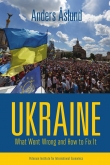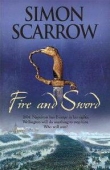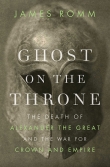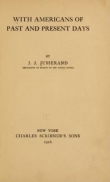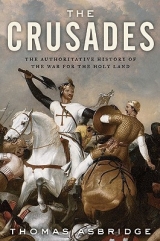
Текст книги "The Crusades. The Authoritative History of the War for the Holy Land"
Автор книги: Thomas Asbridge
Жанр:
История
сообщить о нарушении
Текущая страница: 1 (всего у книги 54 страниц)
The Crusades
The Authoritative History of the War for the Holy Land
Thomas Asbridge

For my father
Gerald Asbridge
Contents
List of Maps
Introduction
Part I: The Coming of the Crusades
1 Holy War, Holy Land
2 Syrian Ordeals
3 The Sacred City
4 Creating the Crusader States
5 Outremer
6 Crusading Reborn
Part II: The Response of Islam
7 Muslim Revival
8 The Light of Faith
9 The Wealth of Egypt
10 Heir or Usurper
11 The Sultan of Islam
12 Holy Warrior
Part III: The Trial of Champions
13 Called to Crusade
14 The Conqueror Challenged
15 The Coming of Kings
16 Lionheart
17 Jerusalem
18 Resolution
Part IV: The Struggle for Survival
19 Rejuvenation
20 New Paths
21 A Saint at War
Part V: Victory in the East
22 Lion of Egypt
23 The Holy Land Reclaimed
Conclusion
The Legacy of the Crusades
Acknowledgements
Chronology
Notes
Searchable Terms
About the Author
Other Books by Thomas Asbridge
Credits
Copyright
About the Publisher
LIST OF MAPS
Western Europe and the Mediterranean
The Near and Middle East
Northern Syria
Palestine and Southern Lebanon
Egypt
The First Crusaders’ Route to the Holy Land
The City of Antioch
The City of Jerusalem
The Crusader States in the Early Twelfth Century
Saladin’s Hattin Campaign
The Siege of Acre during the Third Crusade
Richard the Lionheart’s March from Acre to Jaffa
The Third Crusade: Paths to Jerusalem
The Crusader States in the Early Thirteenth Century
The Nile Delta
Mamluks and Mongols in 1260


Western Europe and the Mediterranean


The Near and Middle East

Northern Syria

Palestine and Southern Lebanon

Egypt
INTRODUCTION
THE WORLD OF THE CRUSADES
Nine hundred years ago the Christians of Europe waged a series of holy wars, or crusades, against the Muslim world, battling for dominion of a region sacred to both faiths–the Holy Land. This bloody struggle raged for two centuries, reshaping the history of Islam and the West. In the course of these monumental expeditions, hundreds of thousands of crusaders travelled across the face of the known world to conquer and then defend an isolated swathe of territory centred on the hallowed city of Jerusalem. They were led by the likes of Richard the Lionheart, warrior-king of England, and the saintly monarch of France, Louis IX, to fight in gruelling sieges and fearsome battles; passing through verdant forests and arid deserts, enduring starvation and disease, encountering the fabled emperors of Byzantium and marching beside forbidding Templar knights. Those who died were thought of as martyrs, while survivors believed that their souls had been scourged of sin by the tempest of combat and trials of pilgrimage.
The advent of these crusades stirred Islam to action, reawakening dedication to the cause of jihad (holy war). Muslims from Syria, Egypt and Iraq fought to drive their Christian foes out of the Holy Land–championed by the merciless warlord Zangi and the mighty Saladin; empowered by the rise of Sultan Baybars and his elite mamluk slave soldiers; sometimes aided by the intrigues of the implacable Assassins. Years of conflict inevitably bred greater familiarity, even at times grudging respect and peaceful contact through truce and commerce. But as the decades passed, the fires of conflict burned on and the tide slowly turned in Islam’s favour. Though the dream of Christian victory lived on, the Muslim world prevailed, securing lasting possession of Jerusalem and the Near East.
This dramatic story has always fired the imagination and fuelled debate. And, over the centuries, the crusades have been subject to startlingly varied interpretations: held up as proof of the folly of religious faith and the base savagery of human nature, or promoted as glorious expressions of Christian chivalry and civilising colonialism. They have been presented as a dark episode in Europe’s history–when ravening hordes of greedy western barbarians launched unprovoked, acquisitive attacks upon the cultured innocents of Islam–or defended as just wars sparked by Muslim aggression and prosecuted to recover Christian territory. The crusaders themselves have been depicted as both land-hungry brutes and pilgrim soldiers inspired by fervent piety; and their Muslim rivals portrayed as vicious and tyrannical oppressors, ardent fanatics or devout paragons of honour and clemency.
The medieval crusades have also been used as a mirror to the modern world, both through the forging of tenuous links between recent events and the distant past, and via the dubious practice of historical parallelism. Thus, during the nineteenth century the French and English appropriated the memory of the crusades to affirm their imperial heritage; while the twentieth and twenty-first centuries have witnessed a deepening tendency within some sections of the Muslim world to equate modern political and religious struggles with holy wars witnessed nine centuries earlier.
This book explores the history of the crusades from both the Christian and Muslim perspectives–focusing, in particular, upon the contest for control of the Holy Land–and examines how medieval contemporaries experienced and remembered the crusades.* It draws upon the wonderfully rich mine of available written evidence (or primary sources) from the Middle Ages: the likes of chronicles, letters and legal documents, poems and songs; recorded in languages as diverse as Latin, Old French, Arabic, Hebrew, Armenian, Syriac and Greek. Beyond these texts, the study of material remains–from imposing castles to delicate manuscript art and minuscule coins–has thrown new light on the crusading era. Throughout, original research has been informed by the great outpouring of modern scholarship in the field witnessed over the past fifty years.1
Containing the history of the crusades to the Holy Land between 1095 and 1291 in a single, accessible volume is a massive challenge. But it does offer enormous opportunities. The chance to trace the grand sweep of events, uncovering the visceral reality of human experience–through agony and exultation, horror and triumph; to chart the shifting fortunes and perceptions of Islam and Christendom. It also makes it possible to ask a series of crucial, interlocking and overarching questions about these epochal holy wars.
Issues linked to the origins and causes of the war for the Holy Land are of fundamental importance. How did two of the world’s great religions come to advocate violence in the name of God, convincing their followers that fighting for their faith would open the gates to Heaven or Paradise? And why did endless thousands of Christians and Muslims answer the call to crusade and jihad, knowing full well that they might face intense suffering and even death? It is also imperative to consider whether the First Crusade, launched at the end of the eleventh century, was an act of Christian aggression, and what perpetuated the cycle of religious violence in the Near East for the two hundred years that followed.
The outcomes and impact of these holy wars are equally significant. Was the crusading era a period of unqualified discord–the product of an inevitable ‘clash of civilisations’–or one that revealed a capacity for coexistence and constructive cross-cultural contact between Christendom and Islam? We must ask who, in the end, won the war for the Holy Land and why, but more pressing still is the question of how this age of conflict affected history, and why these ancient struggles still seem to cast a shadow over the world to this day.
MEDIEVAL EUROPE
In the year 1000, the county of Anjou (in west-central France) was ruled by Fulk Nerra (987–1040), a brutal and rapacious warlord. Fulk spent most of his fifty-three years in power locked in near-constant struggle: fighting on every front to retain control of his unruly county; scheming to preserve his independence from the feeble French monarchy; and preying upon his neighbours in search of land and plunder. He was a man accustomed to violence, both on and off the battlefield–capable of burning his wife at the stake for adultery and of orchestrating the ruthless murder of a royal courtier.
But for all the blood on his hands, Fulk was also a committed Christian–one who recognised that his brutish ways were, by the tenets of his faith, inherently sinful, and thus might lead to his eternal damnation. The count himself admitted in a letter that he had ‘caused a great deal of bloodshed in various battles’ and was therefore ‘terrified by the fear of Hell’. In the hope of purifying his soul, he made three pilgrimages to Jerusalem, more than 2,000 miles away. On the last of these journeys, now an old man, Fulk was said to have been led naked to the Holy Sepulchre–the site of Jesus’ death and resurrection–with a leash around his neck, being beaten by his servant while he begged Christ for forgiveness.2
What drove Fulk Nerra to make such drastic gestures of repentance, and why was his story filled with such feral turmoil? Even people in the eleventh century were shocked by the count’s unbridled sadism and outlandish acts of devotion, so his career evidently was an extreme example of medieval life. But his experiences and mindset were reflective of the forces that shaped the Middle Ages and gave birth to the crusades. And it would be people like Fulk–including many of his own descendants–who stood in the front line of these holy wars.
Western Europe in the eleventh century
Many of those who lived in the same early eleventh-century world as Fulk Nerra feared that they were witnessing the last dark and desperate days of humanity. Apocalyptic dread reached its height in the early 1030s, when it was thought the millennial anniversary of Jesus’ death would presage the Last Judgement. One chronicler wrote of this time: ‘Those rules which governed the world were replaced by chaos. They knew then that the [End of Days] had arrived.’ This palpable anxiety alone helps to explain Fulk’s penitent mentality. But as far as the count and his contemporaries were concerned, it had not always been so. They harboured a collective memory of a more peaceful and prosperous past; a golden age when Christian emperors ruled in God’s name, bringing order to the world in accordance with His divine will. This rather hazily imagined ideal was by no means a perfect recollection of Europe’s history, but it did encapsulate some shards of truth.
Roman imperial rule had provided stability and affluence in the West until the late fourth century CE (Common Era). In the East the Roman Empire lived on until 1453, ruled from the great city of Constantinople, founded in 324 by Constantine the Great–the first emperor to convert to Christianity. Today, historians refer to this enduring realm as Byzantium. In the West between the fifth and the seventh centuries power devolved on to a bewildering array of ‘barbarian’ tribes, but around the year 500 one of these groups, the Franks, established control over north-eastern Gaul, giving rise to a kingdom known as Francia (from which the modern nation of France took its name).* By 800, a descendant of these Franks, Charlemagne (768–814), had united such a huge swathe of territory–encompassing much of modern France, Germany, Italy and the Low Countries–that he could lay claim to the long-dormant title of emperor of the West. Charlemagne and his successors, the Carolingians, presided over a short-lived period of renewed security, but their empire crumbled under the weight of succession disputes and repeated invasions by Scandinavian Vikings and eastern European Magyars. From the 850s onwards, Europe was again ripped apart by political fragmentation, warfare and unrest. The embattled kings of Germany still sought to claim the imperial title and a royal house in France survived in a desperately emasculated state. By the eleventh century Constantine and Charlemagne had passed into legend, the embodiments of a distant era. In the course of medieval European history, many a Christian king sought to emulate and imitate their supposed achievements–among them some who would fight in the crusades.
By the time of Fulk Nerra, the West was gradually emerging from this post-Carolingian age of decline (despite the predictions of Armageddon), but in terms of political and military power, and social and economic organisation, most regions were still highly fragmented. Europe was not partitioned into nation states in the modern sense of the word. Instead, the likes of Germany, Spain, Italy and France were divided into many smaller polities, ruled over by warrior-lords, most of whom were bound by only loose ties of association and loyalty to a crown monarch. Like Fulk, these men bore titles such as dux and comes (duke and count) that harkened back to Roman and Carolingian times, and were drawn from the ranks of a nascent military aristocracy–the increasingly dominant class of well-equipped, semi-professional fighting men who came to be known as knights.
Eleventh-century Europe was not in a state of fully fledged anarchy, but the ravening violence of feud and vendetta was commonplace, and lawlessness endemic. Society was highly localised. Nature’s grip over the West had yet to be loosened, with vast swathes of land still blanketed in forest or left open and uncultivated, and most major road systems dated back to imperial Rome. It was common, in such a world, to go through life without travelling more than fifty miles from one’s birthplace–a fact that made Fulk Nerra’s repeated journeys to Jerusalem, and the later popularity of crusading in the distant Holy Land, all the more extraordinary. Mass communication also did not exist as it would be understood today, because most people were illiterate and printing had not yet been invented.
Nevertheless, in the course of the central Middle Ages (between 1000 and 1300), western civilisation began to show sure signs of development and expansion. Urbanisation slowly gathered pace, and growth in the population of towns and cities helped to stimulate economic recovery and the revival of a monetary-based economy. Among those communities who spearheaded a resurgence in long-distance trade were the seaborne merchants of Italy, based in cities like Amalfi, Pisa, Genoa and Venice. Other groups demonstrated a marked propensity for military conquest. The Normans of northern France (descendants of Viking settlers) were especially energetic in the mid-eleventh century: colonising Anglo-Saxon England; and seizing southern Italy and Sicily from the Byzantines and North African Arabs. Meanwhile, in Iberia, a number of Christian realms began to push their borders south, reconquering territory from the Muslims of Spain.
As western Europeans began to look beyond their early medieval horizons, the forces of commerce and conquest brought them into closer contact with the wider world, and with the great civilisations of the Mediterranean: the ancient ‘eastern Roman’ Byzantine Empire and the sprawling Arab-Islamic world. These long-established ‘superpowers’ were historic centres of wealth, culture and military might. As such, they tended to regard the West as little more than a barbarian backwater–the dismal homeland of savage tribesmen who might be fierce fighters, but were essentially just an uncontrollable rabble, and thus posed no real threat. The coming of the crusades would help to overturn this dynamic, even as it confirmed many of these prejudices.3
Latin Christendom
Ancient Roman rule undoubtedly had a profound effect upon all aspects of western history, but the empire’s most important and enduring legacy was the Christianisation of Europe. Constantine the Great’s decision to embrace Christianity–then a minor eastern sect–after experiencing a ‘vision’ in 312 CE, catapulted this faith on to the world stage. Within less than a century Christianity had displaced paganism as the empire’s official religion, and through the agency of Roman influence ‘Christ’s message’ spread across Europe. Even as the political state that had given it impetus faltered, the Christian faith gained in strength. Europe’s new ‘barbarian’ chieftains converted and soon began to claim that they had a divinely ordained right to rule over their tribes as kings. The mighty unifier Charlemagne styled himself as a ‘sacral’, or sacred, ruler–one who held the right and responsibility to defend and uphold the faith. By the eleventh century, Latin Christianity (so-called because of the language of its scripture and ritual) had penetrated to almost every corner of the West.*
A central figure in this process was the pope in Rome. Christian tradition maintained that there were five great fathers–or patriarchs–of the Church spread across the Mediterranean world at Rome, Constantinople, Antioch, Jerusalem and Alexandria. But the bishop of Rome–who came to call himself ‘papa’ (father) or pope–sought to claim pre-eminence among all these. Throughout the Middle Ages, the papacy struggled not only to assert its ecumenical (worldwide) ‘rights’, but also to wield meaningful authority over the ecclesiastical hierarchy of the Latin West. The decline of the Roman and Carolingian Empires disrupted frameworks of power within the Church, just as it had done within the secular sphere. Across Europe, bishops enjoyed centuries of independence and autonomy from papal control, with most prelates owing their first allegiance to local political rulers and the ‘sacral’ kings of the West. By the early eleventh century, popes were straining simply to make their will felt in central Italy, and in the decades that followed they would sometimes even find themselves exiled from Rome itself.
Nonetheless, it would be a Roman pope who launched the crusades, prompting tens of thousands of Latins to take up arms and fight in the name of Christianity. This remarkable feat, in and of itself, served to extend and strengthen papal power, but the preaching of these holy wars should not be regarded as a purely cynical, self-serving act. The papacy’s role as the progenitor of crusading did help to consolidate Roman ecclesiastical authority in regions like France and, to begin with at least, crusader forces looked as though they might follow the pope’s commands, functioning almost as papal armies. Even so, more altruistic impulses probably also were at work. Many medieval popes seem earnestly to have believed that they had a wider duty to protect Christendom. They also expected, upon death, to answer to God for the fate of every soul once in their care. By constructing an ideal of Christian holy war–in which acts of sanctified violence would actually help to cleanse a warrior’s soul of sin–the papacy was opening up a new path to salvation for its Latin ‘flock’.
In fact, the crusades were just one expression of a much wider drive to rejuvenate western Christendom, championed by Rome from the mid-eleventh century onwards in the so-called ‘Reform movement’. As far as the papacy was concerned, any failings within the Church were just the symptoms of a deeper malaise: the corrupting influence of the secular world, long enshrined by the links between clergymen and lay rulers. And the only way to break the stranglehold enjoyed by emperors and kings over the Church was for the Pope finally to realise his God-given right to supreme authority. The most vocal and extreme proponent of these views was Pope Gregory VII (1073–85). Gregory ardently believed that he had been set on Earth to transform Christendom by seizing absolute control of Latin ecclesiastical affairs. In pursuit of this ambition, he was willing to embrace almost any available means–even the potential use of violence, enacted by papal servants whom he called ‘soldiers of Christ’. Although Gregory went too far, too fast and ended his pontificate in ignominious exile in southern Italy, his bold strides did much to advance the twinned causes of reform and papal empowerment, establishing a platform from which one of his successors (and former adviser), Pope Urban II (1088–99), could instigate the First Crusade.4
Urban’s call for a holy war found a willing audience across Europe, in large part because of the prevailing religious atmosphere in the Latin world. Across the West, Christianity was an almost universally accepted faith and, in contrast to modern secularised European society, the eleventh century was a profoundly spiritual era. This was a setting in which Christian doctrine impinged upon virtually every facet of human life–from birth and death, to sleeping and eating, marriage and health–and the signs of God’s omnipotence were clear for all to see, made manifest through acts of ‘miraculous’ healing, divine revelation and earthly and celestial portents. Concepts such as love, charity, obligation and tradition all helped to shape medieval attitudes to devotion, but perhaps the most powerful conditioning influence was fear; the same fear that made Fulk Nerra believe that his soul was in peril. The Latin Church of the eleventh century taught that every human would face a moment of judgement–the so-called ‘weighing of souls’. Purity would bring the everlasting reward of heavenly salvation, but sin would result in damnation and an eternity of hellish torment. For the faithful of the day, the visceral reality of the dangers involved was driven home by graphic images in religious art and sculpture of the punishments to be suffered by those deemed impure: wretched sinners strangled by demons; the damned herded into the fires of the underworld by hideous devils.
Under these circumstances, it was hardly surprising that most medieval Latin Christians were obsessed with sinfulness, contamination and the impending afterlife. One extreme expression of the pressing desire to pursue an unsullied and perfected Christian life was monasticism–in which monks or nuns made vows of poverty, chastity and obedience, and lived in ordered communities, dedicating themselves to God. By the eleventh century, one of the most popular forms of monastic life was that advocated by the Burgundian monastery of Cluny, in eastern France. The Cluniac movement grew to have some 2,000 dependent houses from England to Italy and enjoyed far-reaching influence, not least in helping to develop and advance the ideals of the Reform movement. Its power was reaching an apex in the 1090s, when Urban II, himself a former Cluniac monk, held the papal office.
Of course, the demands of monasticism were beyond the means of most medieval Christians. And for ordinary laymen and women, the path to God was strewn with the dangers of transgression, because many seemingly unavoidable aspects of human existence–like pride, hunger, lust and violence–were deemed sinful. But a number of interconnected salvific ‘remedies’ were available (even though their theoretical and theological foundations had yet fully to be refined). Latins were encouraged to confess their offences to a priest, who would then allot them a suitable penance, the performance of which supposedly cancelled out the taint of sin. The most common of all penitential acts was prayer, but the giving of alms to the poor or donations to religious houses and the performance of a purgative devotional journey (or pilgrimage) were also popular. These meritorious deeds might also be undertaken outside the formal framework of penance, either as a sort of spiritual down payment, or in order to entreat God, or one of his saints, for aid.
Fulk Nerra was operating within this established belief structure when he sought salvation in the early eleventh century. One remedy he pursued was the foundation of a new monastery within his county of Anjou, at Beaulieu. According to Fulk’s own testimony, he did this ‘so that monks would be joined together there and pray day and night for the redemption of [my] soul’. This idea of tapping into the spiritual energy produced in monasteries through lay patronage was still at work in 1091, when the southern French noble Gaston IV of Béarn decided to donate some property to the Cluniac house of St Foi, Morlaàs, in Gascony. Gaston was an avowed supporter of the Reform papacy, had campaigned against the Moors of Iberia in 1087 and would go on to become a crusader. The legal document recording his gift to St Foi stated that he acted for the benefit of his own soul, that of his wife and children, and in the hope that ‘God may help us in this world in all our needs, and in the future grant us eternal life’. In fact, by Gaston’s day most of western Christendom’s lay nobility enjoyed similar well-established connections with monasteries, and this had a marked effect upon the speed at which crusade enthusiasm spread across Europe after 1095. Partly, this was because the vow undertaken by knights committing to the holy war mirrored that taken by monks–a similarity that seemed to confirm the efficacy of fighting for God. More important still was the fact that the papacy, with its links to religious houses like Cluny, relied upon the monasteries of the Latin West to help spread and support the call to crusade.
The second path to salvation embraced by Fulk Nerra was pilgrimage, and, given his multiple journeys to Jerusalem, he evidently found this particular form of penitential devotion especially compelling–later writing that the cleansing force of his experiences left him in ‘high spirits [and] exultant’. Latin pilgrims often travelled to less distant locations–including major centres like Rome and Santiago de Compostela (in north-east Spain), and even local shrines and churches–but the Holy City was fast emerging as the most revered destination. Jerusalem’s unrivalled sanctity was also reflected in the common medieval practice of placing the city at the centre of maps depicting the world. All of this had a direct bearing upon the exultant reaction to crusade preaching because the holy war was presented as a form of armed pilgrimage, one that had Jerusalem as its ultimate objective.5
Warfare and violence in Latin Europe
In launching the crusades the papacy sought to recruit members of one social grouping above all others: the knights of Latin Europe. This military class was still at an early stage of development in the eleventh century. The fundamental characteristic of medieval knighthood was the ability to fight as a mounted warrior.* Knights were almost always accompanied by at least four or five followers who could act as servants–tending to their master’s mount, weaponry and welfare–but who also were capable of fighting as foot soldiers. When the crusades began, these men were not members of full-time standing armies. Most knights were warriors, but also lords or vassals, landholders and farmers–who would expect to give over no more than a few months in any one year to warfare, and even then did not usually fight in established, well-drilled groups.
The standard forms of warfare in eleventh-century Europe, familiar to almost all knights, involved a mixture of short-distance raiding, skirmishing–which was usually a ragged affair, characterised by chaotic close-quarter combat–and sieges of the many wood-or stone-based castles littered throughout the West. Few Latin soldiers had experience of large-scale pitched battles, because this form of conflict was incredibly unpredictable and therefore generally avoided. Virtually none would have fought in a protracted, long-range campaign of the sort involved in crusading. As such, the holy wars in the East would require the warriors of Latin Christendom to adapt and improve some of their martial skills.6
Before the preaching of the First Crusade, most Latin knights still regarded acts of bloodshed as inherently sinful, but they already were accustomed to the idea that, in the eyes of God, certain forms of warfare were more justifiable than others. There also was some sense that the papacy even might be capable of sanctioning violence.
At first sight, Christianity does appear to be a pacifistic faith. The New Testament Gospels record many occasions when Jesus seemed to reject or prohibit violence: from his warning that he who lived by violence would die by violence, to the Sermon on the Mount’s exhortation to turn the other cheek in response to a blow. The Old Testament also appears to offer clear guidance on the question of violence, with the Mosaic Commandment: ‘Thou shall not kill.’ In the course of the first millennium CE, however, Christian theologians pondering the union between their faith and the military empire of Rome began to question whether scripture really did offer such a decisive condemnation of warfare. The Old Testament certainly seemed equivocal, because as a history of the Hebrews’ desperate struggle for survival, it described a series of holy wars sanctioned by God. This suggested that, under the right circumstances, even vengeful or aggressive warfare might be permissible; and in the New Testament, Jesus had said that he came to bring not peace but a sword, and had used a whip of cords to beat moneylenders out of the Temple.
The most influential early Christian thinker to wrestle with these issues was the North African bishop St Augustine of Hippo (354–430 CE). His work laid the foundation upon which the papacy eventually built the notion of crusading. St Augustine argued that a war could be both lawful and justifiable if fought under strict conditions. His complex theories were later simplified to produce just three prerequisites of a Just War: proclamation by a ‘legitimate authority’, such as a king or bishop; a ‘just cause’, like defence against enemy attack or the recovery of lost territory; and prosecution with ‘right intention’, that is, with the least possible violence. These three Augustinian principles underpinned the crusading ideal, but they fell far short of advocating the sanctification of war.
In the course of the early Middle Ages, Augustine’s work was judged to demonstrate that certain, unavoidable, forms of military conflict might be ‘justified’ and thus acceptable in the eyes of God. But fighting under these terms was still sinful. By contrast, a Christian holy war, such as a crusade, was believed to be one that God actively supported, capable of bringing spiritual benefit to its participants. The chasm separating these two forms of violence was only bridged after centuries of sporadic and incremental theological experimentation. This process was accelerated by the martial enthusiasm of the post-Roman ‘barbarian’ rulers of Europe. Their Christianisation injected a new ‘Germanic’ acceptance of warfare and warrior life into the Latin faith. Under the Carolingians, for example, bishops began sponsoring and even directing brutal campaigns of conquest and conversion against the pagans of eastern Europe. And by the turn of the millennium it had become relatively common for Christian clergy to bless weapons and armour, and the lives of various ‘warrior saints’ were being celebrated.
